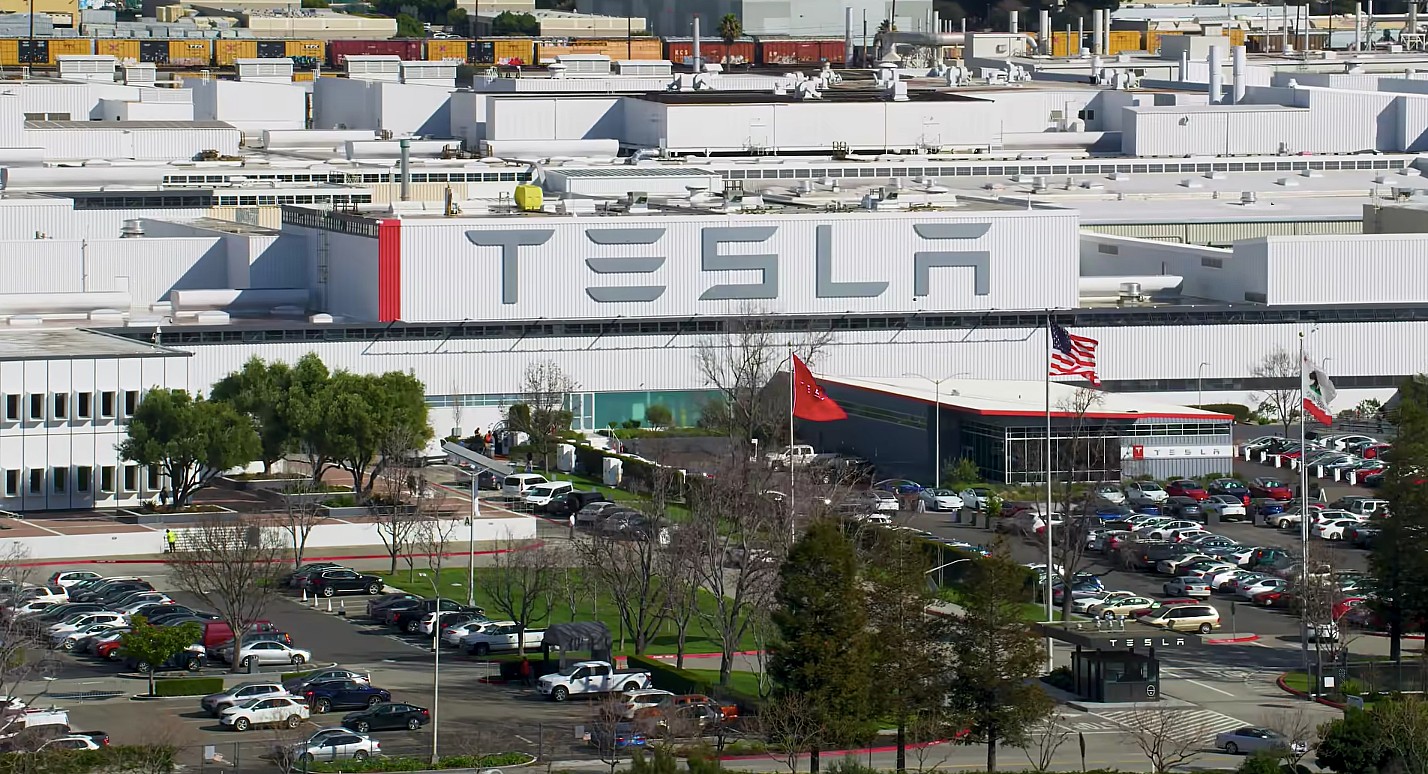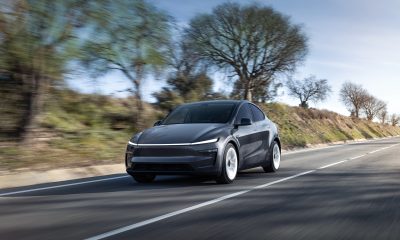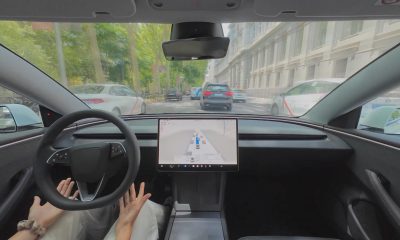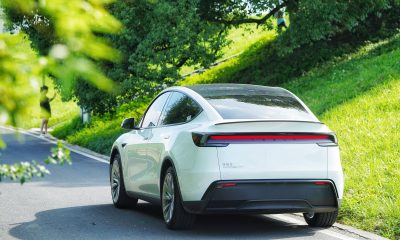Tesla’s Battery Day is coming tomorrow after the electric car maker’s 2020 Annual Shareholder Meeting. During the event, Tesla is expected to discuss the details of its next-generation battery cells, as well as their role in the world’s acceleration in sustainable energy. Actual details about Battery Day have been pretty scarce save for a few potential leaks, but that has not stopped the Tesla community from speculating about what the highly-anticipated event would involve.
A concise summary of the current expectations for Battery Day was recently shared by Tesla Daily’s Rob Maurer, who compiled a list of topics that the electric car maker could cover during the event. Following then is a list of expectations about what Tesla could discuss tomorrow, as the company finally shows the world what it has been working on with regards to its battery technology.
A New Cell Design
Tesla has been teasing that it would be going into the production of battery cells. So far, leaks suggest that the company is about to adopt a larger form factor for its batteries, similar to how Tesla introduced the 2170 cells for the Model 3, which were larger than the 18650 cells used in the Model S and Model X. Leaks have pointed to Tesla’s new cells possibly adopting a 54×98 form factor, which has about 10x the volume of a 2170 cell.
With larger form factors, the electrons and the ions travel larger distances as they move around in the cell, generating more friction and heat. This is a huge downside to larger cells, but Tesla’s tabless battery patent may hold the key to solving this issue. With a tabless battery cell design, the distance traveled by electrons and ions is largely reduced, limiting the disadvantages inherent among large cells. Such a design has several advantages, including better energy density and a more efficient manufacturing process.
Battery Chemistry
Speculations are abounding that Tesla may discuss the amount of silicon that it is using in the anode of its next-generation cells. The more silicon that is used, the better the energy density. However, the utilization of silicon usually results in cracked anodes over time, reducing battery performance and life. Introducing more silicon into the anode is something that battery researchers have been attempting to accomplish for a while now, so it would be quite interesting if the electric car maker would announce some headway into its silicon use as well.
Tesla may also discuss Maxwell’s technology and how it is being used for the company’s electric cars and energy storage devices. Maxwell has developed numerous innovations prior to its acquisition by Tesla, though the most relevant part of the company’s work in relation to the electric car maker is arguably its dry battery electrode tech. Considering that traditional lithium-ion batteries produce their electrodes in a wet slurry format (a rather lengthy process), dry electrode technology could vastly improve not only the energy density of Tesla’s cells, they could improve the production output of the batteries themselves as well.
Cell-to-Pack Innovations
Tesla’s battery packs today feature cells that are packed into modules that are then packed into a battery pack. Back in the days of the original Roadster, battery modules were used as a means for the company to take out parts of the battery that may need to be replaced without taking out the entire pack. That was 12 years ago, however, and much has happened since then. Tesla has transitioned from a budding niche electric car maker to the manufacturer of the market’s best-selling EVs.
As Elon Musk noted in the past, battery modules today are pretty much just an extra step, taking up weight without really serving a legitimate purpose. Musk then stated that the future is cell to pack without modules, suggesting that the company’s next-generation batteries will be using a cell-to-pack design. Such an innovation gives numerous benefits to Tesla, from lower production costs to possibly even better energy density.
Battery Manufacturing and the Roadrunner Line
Elon Musk has always been pretty transparent about Tesla’s mission, which is to accelerate the advent of sustainable energy. Having enough batteries to enable such a transition is key to this goal. With this in mind, the potential innovations that Tesla will be discussing in Battery Day — a larger form factor that would allow the company to produce fewer cells to get the same amount of energy; a tabless cell design that could make production easier; dry electrode tech that could greatly increase the production capacity density of each battery; and a cell-to-pack design that should allow the production of batteries with less equipment at less cost — could ultimately pave the way for electric vehicles and energy storage products that are significantly better than the industry standard today.
The Roadrunner project in Fremont is expected to be a central component of Tesla’s battery manufacturing plans, with attendees to the event being shown just how fast the company could produce its battery cells using its in-house production process. Elon Musk seems to be hyping the Roadrunner line recently on Twitter as well, when he made references to a game called “Factorio,” which happens to be a title focused on growing and maintaining advanced, efficient factories.
The Million-Mile Battery
The million-mile battery has been heavily speculated for Battery Day. Tesla’s electric cars are already capable of lasting long despite heavy use, but with batteries and powertrains that could last a million miles, the company could create a generation of vehicles that are designed to be always operational for an extended period of time. Million-mile batteries are then crucial for Tesla’s plans to roll out a Robotaxi service, which involves vehicles traveling long distances every year.
The Plaid Powertrain
With Tesla’s battery innovations in mind, speculations are high that the company would unveil its first vehicles that would carry its next-generation cells on Battery Day. Among Tesla’s ongoing projects, the Roadrunner cells seem to be a perfect match for cars like the Plaid Model S, Plaid Model X, and next-generation Roadster. All three vehicles have been confirmed by Elon Musk to feature the company’s upcoming “Plaid Powertrain,” which is something that has been heavily teased for some time now. Interestingly enough, updates on Tesla’s Plaid vehicles have been pretty scarce lately, making an announcement on Battery Day somewhat likely.
Watch Rob Maurer’s full Tesla Battery Day predictions in the video below.
News
Tesla UK sales see 14% year-over-year rebound in June: SMMT data
The SMMT stated that Tesla sales grew 14% year-over-year to 7,719 units in June 2025.

Tesla’s sales in the United Kingdom rose in June, climbing 14% year-over-year to 7,719 units, as per data from the Society of Motor Manufacturers and Traders (SMMT). The spike in the company’s sales coincided with the first deliveries of the updated Model Y last month.
Model Y deliveries support Tesla’s UK recovery
Tesla’s June performance marked one of its strongest months in the UK so far this year, with new Model Y deliveries contributing significantly to the company’s momentum.
While the SMMT listed Tesla with 7,719 deliveries in June, independent data from New AutoMotive suggested that the electric vehicle maker registered 7,891 units during the month instead. However, year-to-date figures for Tesla remain 2% down compared to 2024, as per a report from Reuters.
While Tesla made a strong showing in June, rivals are also growing. Chinese automaker BYD saw UK sales rise nearly fourfold to 2,498 units, while Ford posted the highest EV growth among major automakers, with a more than fourfold increase in the first half of 2025.
Overall, the UK’s battery electric vehicle (BEV) demand surged 39% to to 47,354 units last month, helping push total new car sales in the UK to 191,316 units, up 6.7% from the same period in 2024.
EV adoption accelerates, but concerns linger
June marked the best month for UK car sales since 2019, though the SMMT cautioned that growth in the electric vehicle sector remains heavily dependent on discounting and support programs. Still, one in four new vehicle buyers in June chose a battery electric vehicle.
SMMT Chief Executive Mike Hawes noted that despite strong BEV demand, sales levels are still below regulatory targets. “Further growth in sales, and the sector will rely on increased and improved charging facilities to boost mainstream electric vehicle adoption,” Hawes stated.
Also taking effect this week was a new US-UK trade deal, which lowers tariffs on UK car exports to the United States from 27.5% to 10%. The agreement could benefit UK-based EV producers aiming to expand across the country.
News
Tesla Model 3 ranks as the safest new car in Europe for 2025, per Euro NCAP tests
Despite being on the market longer than many of its rivals, the Tesla Model 3 continues to set the bar for vehicle safety.

The Tesla Model 3 has been named the safest new car on sale in 2025, according to the latest results from the Euro NCAP. Among 20 newly tested vehicles, the Model 3 emerged at the top of the list, scoring an impressive 359 out of 400 possible points across all major safety categories.
Tesla Model 3’s safety systems
Despite being on the market longer than many of its rivals, the Tesla Model 3 continues to set the bar for vehicle safety. Under Euro NCAP’s stricter 2025 testing protocols, the electric sedan earned 90% for adult occupant protection, 93% for child occupant protection, 89% for pedestrian protection, and 87% for its Safety Assist systems.
The updated Model 3 received particular praise for its advanced driver assistance features, including Tesla’s autonomous emergency braking (AEB) system, which performed well across various test scenarios. Its Intelligent Speed Assistance and child presence detection system were cited as noteworthy features as well, as per a WhatCar report.
Other notable safety features include the Model 3’s pedestrian-friendly pop-up hood and robust crash protection for both front and side collisions. Euro NCAP also highlighted the Model 3’s ability to detect vulnerable road users during complex maneuvers, such as turning across oncoming traffic.
Euro NCAP’s Autopilot caution
While the Model 3’s safety scores were impressive across the board, Euro NCAP did raise concerns about driver expectations of Tesla’s Autopilot system. The organization warned that some owners may overestimate the system’s capabilities, potentially leading to misuse or inattention behind the wheel. Even so, the Model 3 remained the highest-scoring vehicle tested under Euro NCAP’s updated criteria this year.
The Euro NCAP’s concerns are also quite interesting because Tesla’s Full Self-Driving (FSD) Supervised, which is arguably the company’s most robust safety suite, is not allowed for public rollout in Europe yet. FSD Supervised would allow the Model 3 to navigate inner city streets with only minimal human supervision.
Other top scorers included the Volkswagen ID.7, Polestar 3, and Geely EX5, but none matched the Model 3’s total score or consistency across categories. A total of 14 out of 20 newly tested cars earned five stars, while several models, including the Kia EV3, MG ZS, and Renault 5, fell short of the top rating.
Elon Musk
Why Tesla’s Q3 could be one of its biggest quarters in history
Tesla could stand to benefit from the removal of the $7,500 EV tax credit at the end of Q3.

Tesla has gotten off to a slow start in 2025, as the first half of the year has not been one to remember from a delivery perspective.
However, Q3 could end up being one of the best the company has had in history, with the United States potentially being a major contributor to what might reverse a slow start to the year.
Earlier today, the United States’ House of Representatives officially passed President Trump’s “Big Beautiful Bill,” after it made its way through the Senate earlier this week. The bill will head to President Trump, as he looks to sign it before his July 4 deadline.
The Bill will effectively bring closure to the $7,500 EV tax credit, which will end on September 30, 2025. This means, over the next three months in the United States, those who are looking to buy an EV will have their last chance to take advantage of the credit. EVs will then be, for most people, $7,500 more expensive, in essence.
The tax credit is available to any single filer who makes under $150,000 per year, $225,000 a year to a head of household, and $300,000 to couples filing jointly.
Ending the tax credit was expected with the Trump administration, as his policies have leaned significantly toward reliance on fossil fuels, ending what he calls an “EV mandate.” He has used this phrase several times in disagreements with Tesla CEO Elon Musk.
Nevertheless, those who have been on the fence about buying a Tesla, or any EV, for that matter, will have some decisions to make in the next three months. While all companies will stand to benefit from this time crunch, Tesla could be the true winner because of its sheer volume.
If things are done correctly, meaning if Tesla can also offer incentives like 0% APR, special pricing on leasing or financing, or other advantages (like free Red, White, and Blue for a short period of time in celebration of Independence Day), it could see some real volume in sales this quarter.
You can now buy a Tesla in Red, White, and Blue for free until July 14 https://t.co/iAwhaRFOH0
— TESLARATI (@Teslarati) July 3, 2025
Tesla is just a shade under 721,000 deliveries for the year, so it’s on pace for roughly 1.4 million for 2025. This would be a decrease from the 1.8 million cars it delivered in each of the last two years. Traditionally, the second half of the year has produced Tesla’s strongest quarters. Its top three quarters in terms of deliveries are Q4 2024 with 495,570 vehicles, Q4 2023 with 484,507 vehicles, and Q3 2024 with 462,890 vehicles.
-

 Elon Musk4 days ago
Elon Musk4 days agoTesla investors will be shocked by Jim Cramer’s latest assessment
-

 News1 week ago
News1 week agoTesla Robotaxi’s biggest challenge seems to be this one thing
-

 Elon Musk2 weeks ago
Elon Musk2 weeks agoFirst Look at Tesla’s Robotaxi App: features, design, and more
-

 News2 weeks ago
News2 weeks agoSpaceX and Elon Musk share insights on Starship Ship 36’s RUD
-

 News2 weeks ago
News2 weeks agoWatch Tesla’s first driverless public Robotaxi rides in Texas
-

 News1 week ago
News1 week agoWatch the first true Tesla Robotaxi intervention by safety monitor
-

 News2 weeks ago
News2 weeks agoTesla has started rolling out initial round of Robotaxi invites
-

 Elon Musk2 weeks ago
Elon Musk2 weeks agoTesla to launch in India in July with vehicles already arriving: report


















